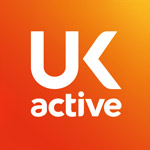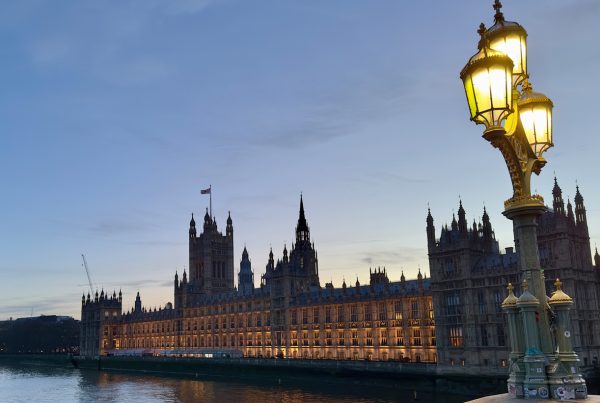Consumer thirst for fitness will see gym sector become ‘shining star’ of post-Brexit economy
The value of the UK gym sector is set to increase by £1.1bn in 2016, driven by a hive of investment activity amid growing consumer appetite for fitness, according to a new financial report from non-profit health body ukactive.
Released today (18th October), The Rise of the Activity Sector report spotlights the UK’s fast-changing fitness landscape and predicts it to grow by 17 per cent in 2016. Valuation specialist Mazars and sponsorship experts Nielsen Sports conducted analyses for the report, which estimates the gym sector will be worth £7.7bn by the end of 2016 (up from £6.6bn last year) as investors are enticed by the sector’s strong growth prospects.
Low-cost giant The Gym Group floated on the London Stock Exchange last year, while the UK’s largest fitness chain Pure Gym has recently sought to follow suit, with several other operators expected to go public in the mid-term as they seek financial backing to fuel rapid expansion.
Despite Pure Gym opting to pull back last week from its planned flotation due to current volatility in the IPO market, the ukactive report underlines the latent potential in the fitness market and points to strong consumer demand as evidence that the sector won’t be thrown off course by the choppy waters of Brexit.
Britain’s growing gym market is already the largest in Europe and the report tips the sector to be among the ‘shining stars’ of the UK’s post-Brexit economy. British firms accounted for six of the 19 mergers and acquisitions to take place in the European fitness market last year and the UK’s position as a hub of investment activity has continued with the recent acquisition of Fitness First UK by Dave Whelan’s DW Fitness.
Market segmentation
With 14.3 per cent of UK adults now owning gym memberships – a figure which has increased every year since 2008 – the report sheds light on the growing appeal of exercise. New concepts have opened the market to a broader range of consumers and there are now 6,435 gyms across the private, public and third sectors, serving 9.2 million members. Official figures show that going to the gym has been a consistent driver of activity participation, with the most recent Sport England statistics showing a seven per cent increase over the last year.
The report charts the rise of the low-cost sector, led by Pure Gym and The Gym Group, who have been credited with ‘democratising fitness’. Offering lower prices, 24-hour access and shorter-term contracts, low-cost gyms have played a key role in removing many of the traditional barriers to owning memberships.
At the other end of the spectrum, premium operators such as David Lloyd Leisure, Nuffield Health and Virgin Active have refined their propositions by investing in family friendly full-service offerings. The ukactive report also examines the growing prominence of boutique fitness studios such as Heartcore and Barry’s Bootcamp, which offer high-end fitness experiences on a pay-as-you-play basis.
Growth opportunities
In an ageing society where the NHS is being stretched to its limits by preventable lifestyle-related conditions such as heart disease and type-2 diabetes, the report explores how the sector’s growth prospects will be further enhanced by the need for practical health policies focused on prevention over cure. Physical inactivity currently costs the UK £20bn and the government has started to place greater emphasis on the importance of getting Britons moving more through its recent Sport and Childhood Obesity strategies.
Another focus for the new government is driving productivity and the report tips the growth of workplace health and wellbeing programmes – key to reducing absenteeism and boosting bottom line – as a major opportunity for the gym sector moving forward.
Technology drivers
The ukactive report notes how one of the big drivers of gym sector growth in recent years has been the boom in fitness-focused technology, with giants such as Apple, Microsoft and Google helping to fuel the rise of the “Quantified Self”. New products, such as fitness apps and wearable technology, have enhanced the consumer fitness experience, fostering greater engagement and helping to increase gym retention rates.
Landmark report
Accounting for stronger investment sentiment as well as the sponsorship value of gyms, the ukactive report offers a significantly higher valuation of the sector than previous reports. It notes that economic value and growth is being driven by more than rising revenues, with market segmentation, technology and increasingly diverse consumers (such as older females and over 65s) also making an impact.
In addition to its valuation forecast, The Rise of the Activity Sector report highlights 15 case studies from organisations which have shaped the ‘coming of age’ of the sector.
Nick Bishop, Managing Director, Morgan Stanley, Head of Leisure EMEA, said: “As we can see from the flurry of recent investment activity, there is significant investor interest in the physical activity sector, driven by strong growth prospects.
“For now the focus in the UK has been mainly on the low cost segment, the growth of which has been driven by existing fitness members seeking value and new fitness members attracted by the low entry price.
“Exercise has a major role to play in the health agenda and the sustained increases in gym memberships since 2008 and the sector’s relative resilience following that turbulent period shows that it is becoming increasingly ingrained as a positive habit in the lives of UK consumers.”
Steven Ward, Executive Director of ukactive, said: “Britain is waking up to the benefits of physical activity and eagle-eyed investors have been quick to spot the sector’s potential.
“This report is the first to highlight the true economic value of the health and fitness sector and show that the UK’s gyms are very much open for business.
“Having boosted memberships throughout the recession, we expect gyms to be among the shining stars of Britain’s post-Brexit economy, driving substantial business growth while keeping the national healthy, happy and productive.”
John Treharne, CEO of The Gym Group, said:
“The Gym Group was conceived in the teeth of the last recession and has since grown to 82 gyms with over 420,000 members. We’ve played a leading role in the rise of the low-cost sector and 30 per cent of our new members have never joined a gym before, which has been key to broadening the market.
“As ever, location, quality of gym equipment, convenient opening hours, ease of joining, highly flexible contract and good changing facilities are all key to success in this fast-growing market.
“Research suggests there remains significant capacity for more gyms in the UK and we are confident that the low-cost sector will remain a major driver of growth with the market yet to reach maturity.”
Matt Merrick, investor and adviser to the health and wellbeing sector and former Virgin Active COO, said:
“The health, fitness and activity landscape is likely to attract significant investment interest over the coming years. Favourable demographic and sociological trends make investing in this space particularly appealing in the medium to long term as people increasingly focus on their health, fitness and longevity.”
“The health and fitness market is on the brink of a digital and customer experience revolution and this disruption will not only offer M&A opportunities within the existing operator landscape, it will also see the rise of an emerging start up community who create unique and engaging experiences which grow the market overall.”
“Investors need to have a clear plan as to how they intend to realise a return for their shareholders. The hunters will inevitably become the hunted if they fail to keep ahead of the curve on technology and customer experience developments.”

More People More Active More Often




